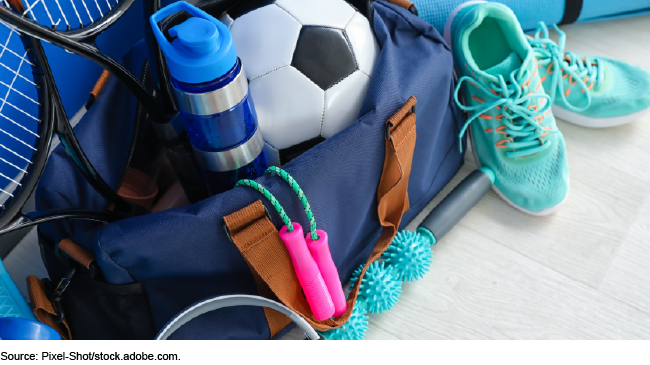Sexual Harassment and Violence: Efforts to Help College Athletes
Fast Facts
This Q&A report examines campus sexual harassment and violence and its effects on college athletes, including:
Why it can be hard for some athletes to report it
How some colleges address it
For example, some college athletes may be reluctant to report because they fear being ostracized or jeopardizing a scholarship.
To address the issue, some colleges train athletes to recognize and report sexual harassment and provide support for alleged victims—e.g., counseling and ways to make up missed coursework. We also examined the extent the Department of Education monitors colleges' compliance with related Title IX regulations.

Highlights
What GAO Found
College athletes are part of a sports culture that may make it difficult for them to report sexual harassment and violence, according to college officials and athletes GAO interviewed. For example, athletes may be reluctant to report because they fear being ostracized or jeopardizing a scholarship. Research is mixed on whether sexual harassment and violence is more prevalent among college athletes than the general college student population.
To address sexual harassment and violence, selected colleges included in GAO's study focused on training athletes and others on how to recognize and report it. In addition, these colleges reported focusing on providing support to those affected by sexual harassment and violence, such as offering counseling and arranging for students to re-do or make up coursework. Colleges also reported implementing procedures required under Title IX regulations to investigate and resolve allegations of sexual harassment.
Education's Office for Civil Rights (OCR) enforces Title IX and its implementing regulations primarily by investigating complaints, such as those that allege a college was deliberately indifferent to a report of sexual harassment. OCR also provides information and guidance to help colleges understand Title IX's implementing regulations. Education recently published revised regulations with an effective date of August 1, 2024. The revised regulations define sex-based harassment and specify requirements for associated grievance procedures and training, among other things. OCR officials said they will consider additional needs colleges may have for Title IX information and guidance, if any.
Why GAO Did This Study
High-profile cases at multiple colleges have raised concerns about sexual harassment and violence against athletes. Some cases involved hundreds of athletes, and alleged perpetrators included coaches, team doctors, and other athletes. Those affected were of different genders in sports such as football, gymnastics, and wrestling. Sexual harassment and violence can inflict lifelong trauma, ruin athletic careers, and adversely affect educational achievements.
Title IX of the Education Amendments of 1972 generally prohibits discrimination on the basis of sex in education programs or activities that receive federal financial assistance, including colleges. The U.S. Department of Education's regulations implementing Title IX outline how recipients are to respond to sexual harassment, including sexual violence, in their education programs or activities.
GAO was asked to review issues related to sexual harassment and violence against college athletes. This report examines barriers for athletes in reporting sexual harassment and violence to their colleges, how selected colleges address sexual harassment and violence in athletic programs, and the extent Education monitors colleges' compliance with related Title IX regulations.
To examine barriers for athletes in reporting sexual harassment and violence to their colleges and how selected colleges address sexual harassment and violence in athletic programs, GAO interviewed four groups: Education officials; representatives from five research, advocacy, sports, and other organizations; officials from 10 colleges in four states; and 13 athletes from the selected colleges. GAO selected the 10 colleges for a variety of factors such as the size of the athletics program and geographic location. To identify the 13 athletes, GAO worked with officials and student leadership groups at the selected colleges and interviewed at least two athletes per state. To examine the extent Education monitors colleges' compliance with related Title IX regulations, GAO reviewed relevant federal laws, regulations, and Education information and guidance, and analyzed data on complaints filed with Education's Office for Civil Rights.
For more information, contact Kathryn A. Larin at (202) 512-7215 or LarinK@gao.gov.
